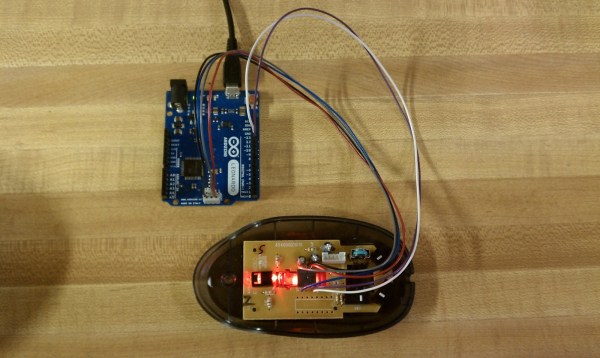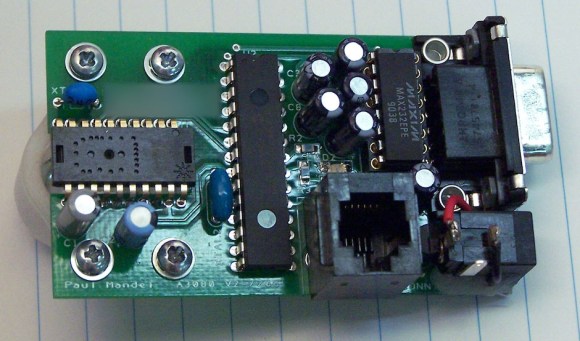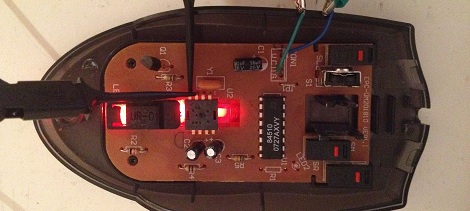[Dominic Buchstaller] found this German Greatz tube radio at a flea market. It only cost him about €35 and was in a bit more rough condition than the finished product you see above. He also found that a portion of the original circuitry was missing, making it completely non-function. He cleaned up the case to improve the wife-acceptance-factor, and outfitted it with hardware to make it a web radio.
Adding modern speakers was pretty easy as he was already replacing the original cloth bezel which has several holes and tears in it. A set of elements from some Logitech computer speakers served as the organ donors for this step in the process. As he was trying to keep a stock look he came up with a really neat hack to use the original knobs. The station select happens to have a large metal wheel on the inside which is about a centimeter wide. [Dominic] used the optical sensor from a mouse to monitor the turning of the dial by aiming the sensor at this wheel. Internet connectivity was provided by a wireless router he had on hand. This way he can stream music or play from an SD card he also used in the retrofit.

















